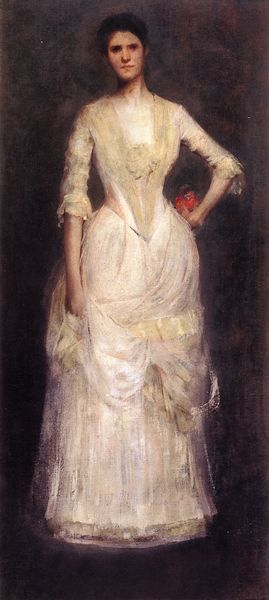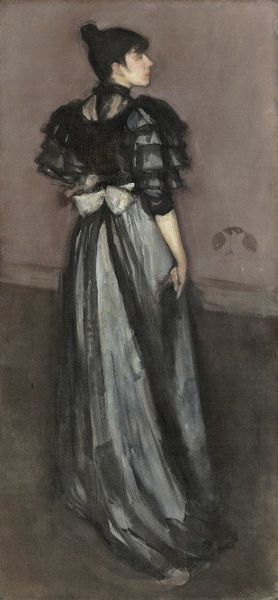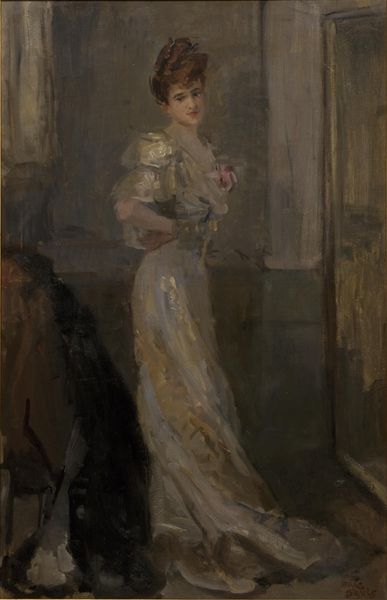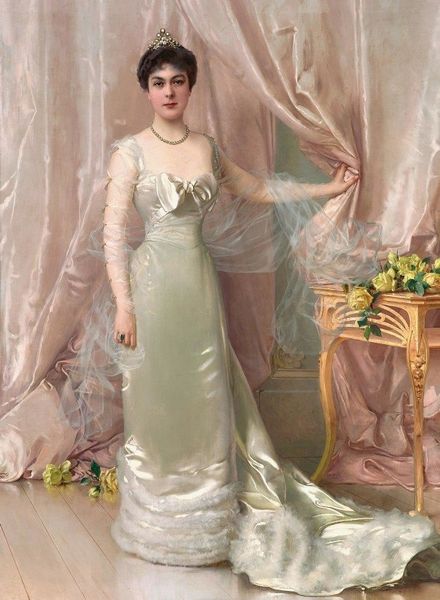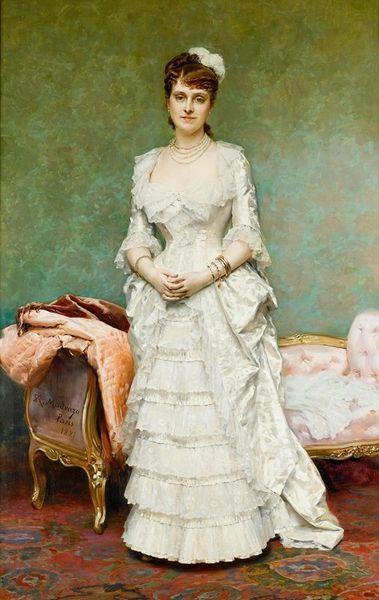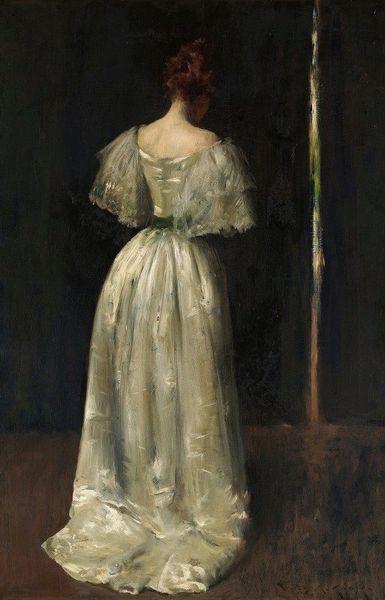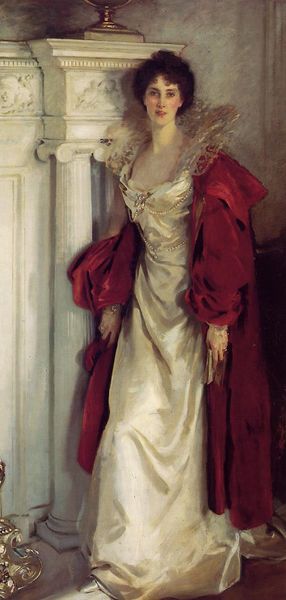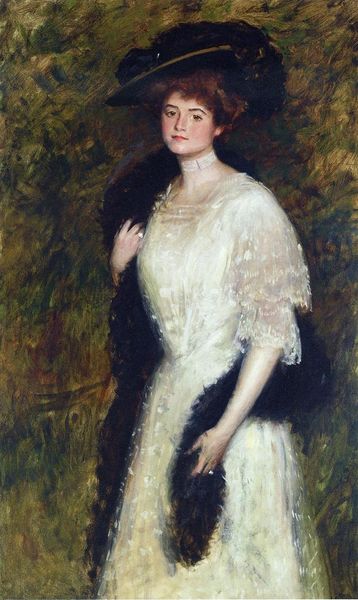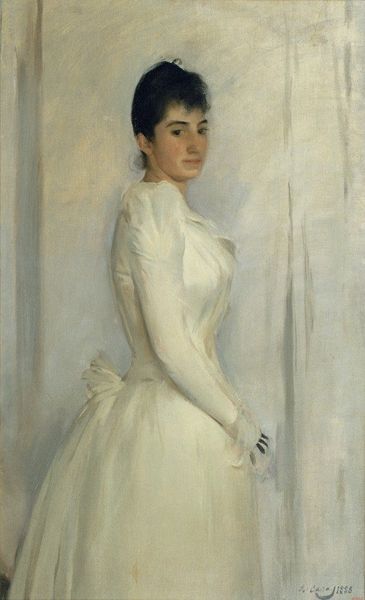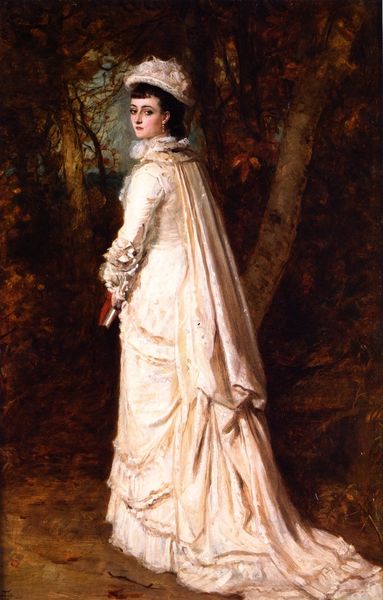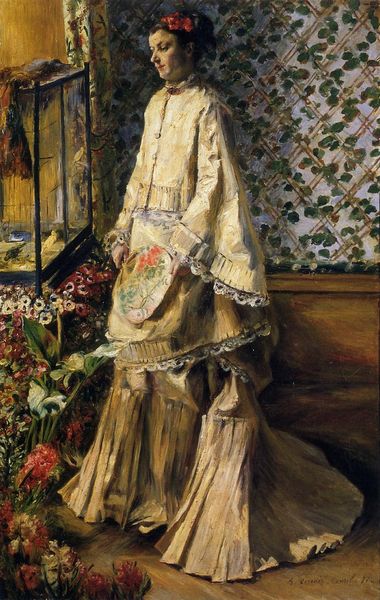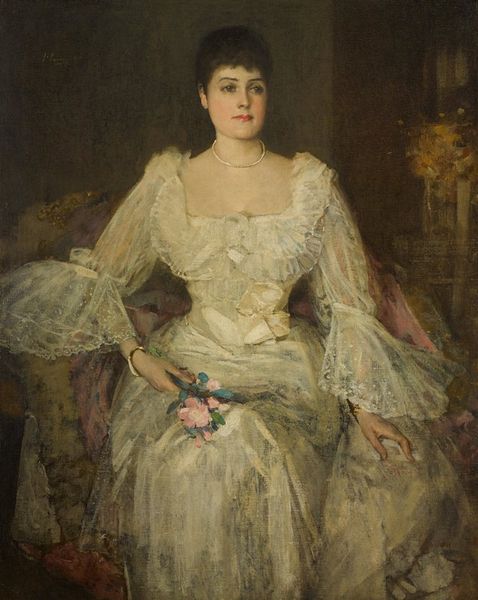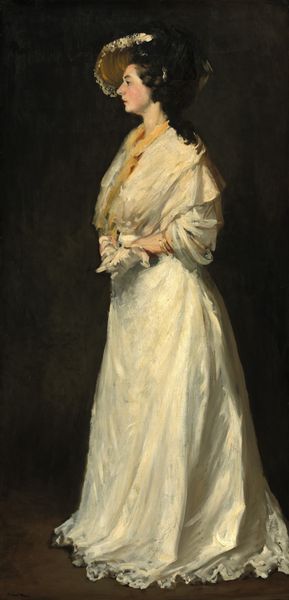
Copyright: Public Domain: Artvee
Curator: Here we have James Abbott McNeill Whistler's "Symphony in White, No. 1 – The White Girl," painted in 1862, rendered with oil paint. What strikes you upon first viewing? Editor: Well, I’m immediately struck by the almost overwhelming use of white and cream. It's unnerving; a sense of ghostly stillness permeates the entire scene. She looks fragile, almost ethereal. Curator: It's quite daring for the time. The pre-Raphaelite influence is palpable, yet he's stripping away much of their narrative detail. The very *act* of painting white on white becomes central. Look at the texture, how he builds up layers of pigment to capture the subtle variations in tone and light. Editor: Indeed, there is a compelling juxtaposition there. She's surrounded by whiteness; her dress, the curtain behind her, but her russet hair and the darkness in the rug introduce conflicting ideas about purity and what it obscures. Notice how carefully he places the single flower in her hand as well – it’s a crucial detail. Curator: The animal pelt beneath her feet offers another layer, don't you think? The consumption of that pelt is integral to reading this, offering both a symbol of societal status and potential commentary of the exploitation of the natural world in an industrial era. Editor: That dark head disrupts the visual harmony, perhaps hinting at something darker, less innocent than it initially seems. Maybe she is meant to represent forsaken love? Curator: Or even lost innocence, which, with the manufacturing boom, the availability of commodities in the West, makes a statement about the direction society was headed at the time of its creation. Editor: Thinking of it this way offers new insights. Thanks for shifting my perspective from the figure’s internal, romantic state toward external, physical realities. Curator: The beauty of art lies in its capacity to be understood from many different perspectives. I appreciate you elucidating all of its symbolic implications.
Comments
No comments
Be the first to comment and join the conversation on the ultimate creative platform.
